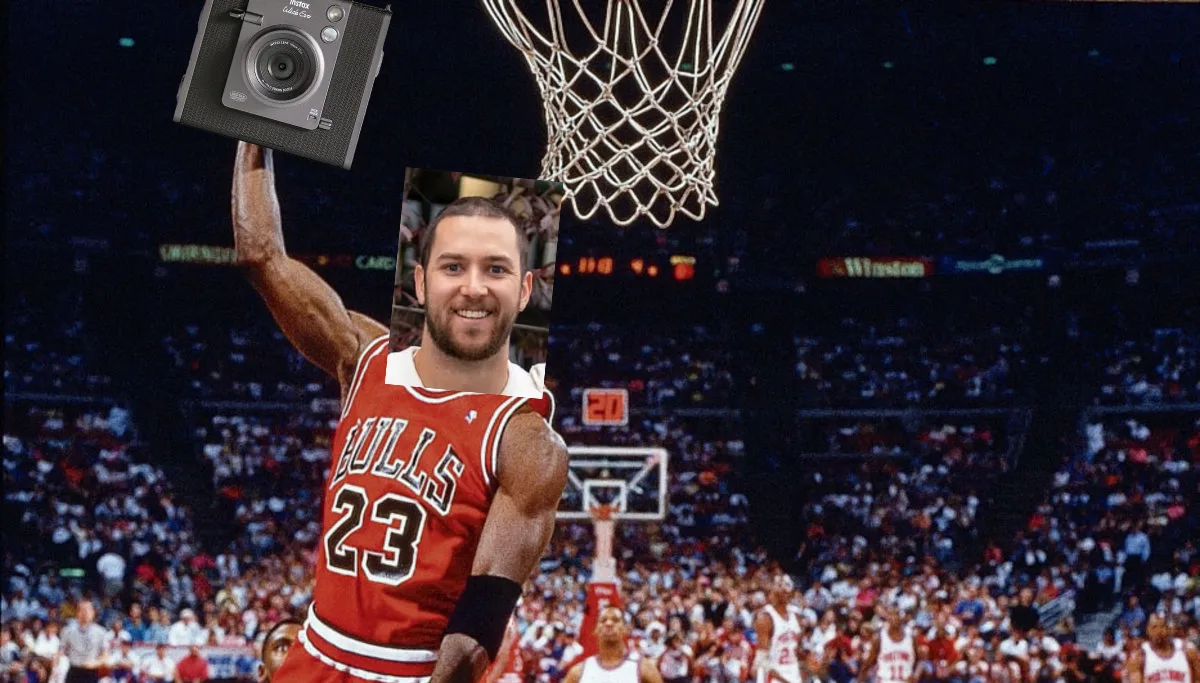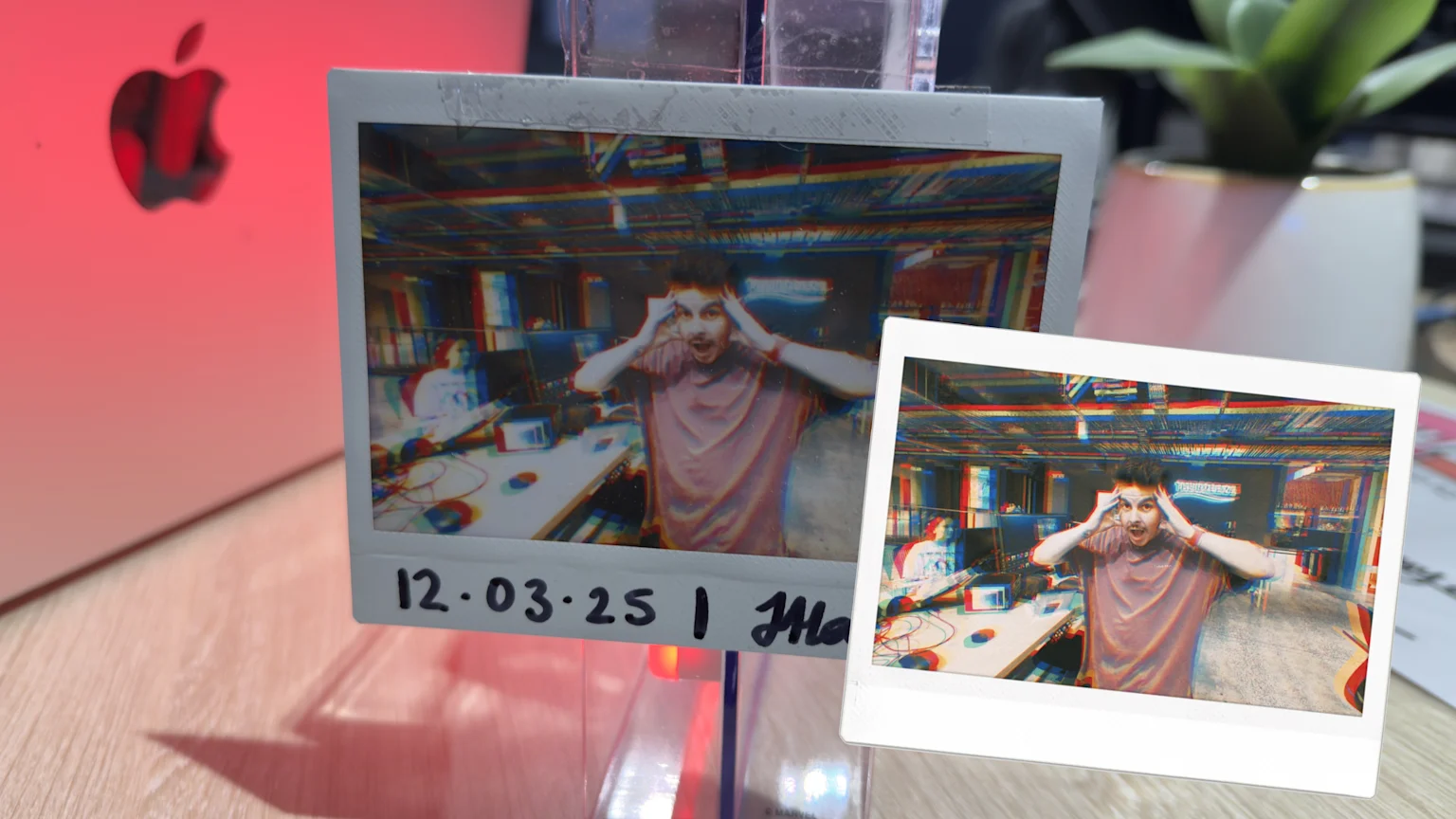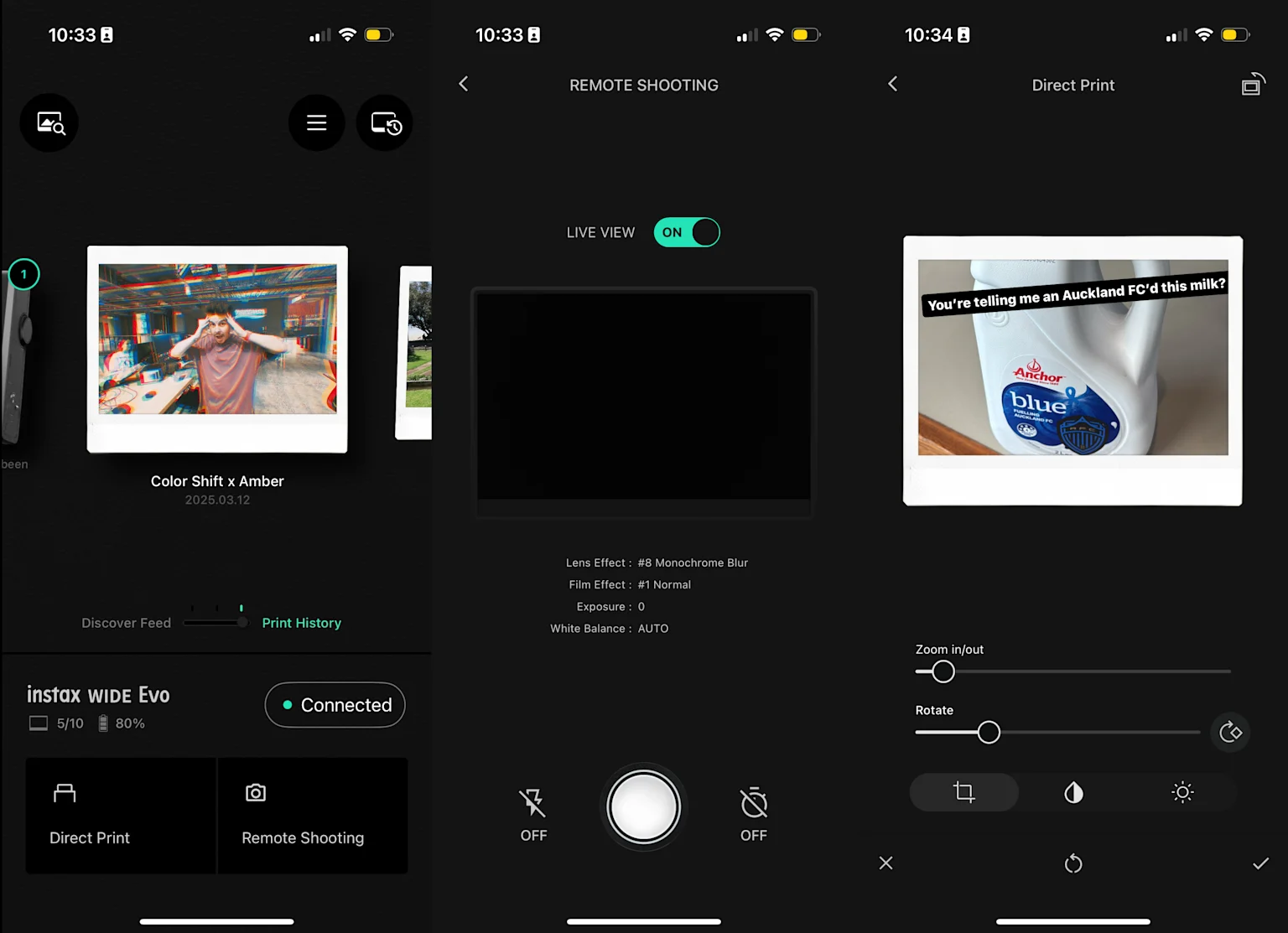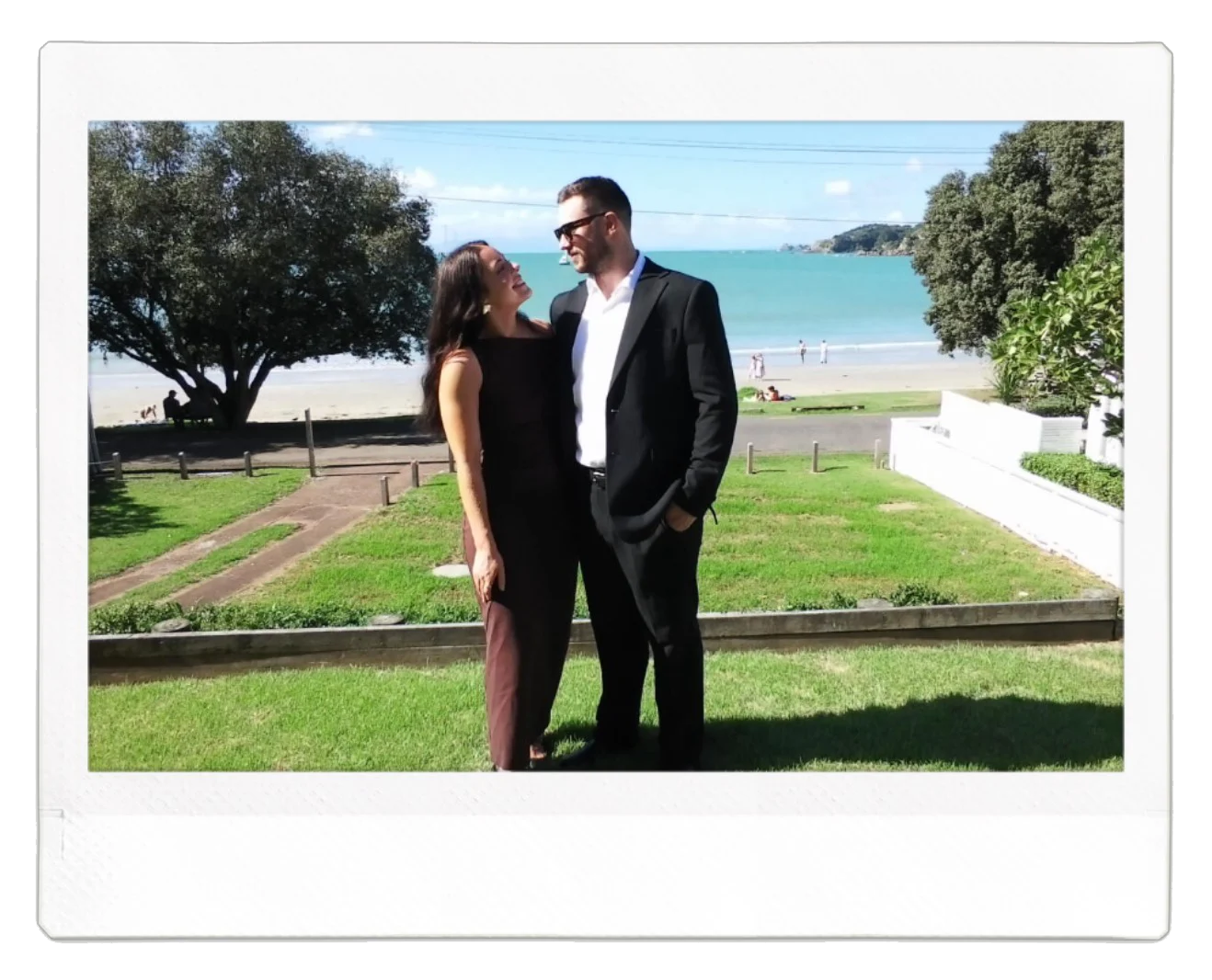As a boyfriend of Instagram and the guy that always ends up holding everyone's phones, I was thrilled when the brand new Fujifilm instax WIDE Evo arrived at my doorstep.
The timing couldn’t have been better - with three weddings to attend in as many weeks I was now equipped to go on a ‘90s Chicago Bulls run as an amateur photographer with a cool new toy to show off.

Unboxing this thing in the middle of the office, I was showered with oohs and ahhs while the camera was gently passed around like a newborn.
Initial reactions included "It looks like a Fujifilm - oh it is a Fujifilm" and "It looks 2014 - very 2014" (2014 was great vintage by the way so I’m gonna take this as a big tick).
Visually, the camera looks great. It’s sleek in its design and the textured charcoal grey body is a great finish.
As far as functionality, the camera is a fascinating collision of analog and digital - which can feel a bit like a car crash in slow motion while you’re getting used to the controls.
At first I found the camera a bit clunky to hold and operate, with the square shape not super comfortable and the shutter location (on the front of the camera) equally awkward, though in time you do get used to it.
A traditional viewfinder disappears in favour of a large LCD screen, which provides a direct reflection of the wide images you are capturing, but still makes it a little difficult to lock in for the perfect shot if you’re used to looking through a little rectangle.
Dials on either side of the camera are where you’ll find the lens effects and film effects, while a button on top will cycle through six new film styles. These are the stars of the show and where you can let your creativity come through.
With ten effects assigned to the dials on each side, simply turn and test, turning both to stack two styles on top of each other and provide more combinations than you will ever need. If you’re still not 100% happy, you can use the dial on the lens to adjust the intensity of the effects on a simple 0-100 scale.
The first photo I took, I stacked two of the most extreme effects and cranked the dial to 100 and produced something pretty bloody cool (now immortalised on my co-worker’s desk).

Alongside your usual exposure and white balance settings, it’s easy enough to play around until you’re satisfied with the result, and the beauty of this being a digital hybrid means you don’t have just one shot at nailing it like your traditional instant film camera - which at first was something myself and my coworkers were torn on.
There’s just something about the mystery of not knowing how your instant film photo is gonna turn out until it’s developed, but it’s also nice to know you never have to waste expensive film again. And both micro SD card and internal storage means you don’t have to always have film on hand, and can always print at a later date.
On wasting film, another key thing about the camera is that you don’t even have to use it to take the photos. With the companion app on my phone, I was able to quickly pair the camera and open up a bustling two way street of photo sharing.

The camera’s dedicated app allows you to easily transfer your photos from the camera to your phone, and you can choose to retain the signature instant photo border if you wish. Conversely, you can use the camera as a printer and send photos from your phone’s camera roll, applying the camera’s effects to your photos before you print them to offer the best of both worlds. (Side note: unfortunately you can only transfer photos that you have printed to your phone, but you can print any photos from your phone’s camera roll using the camera).
The camera was perfect to pass around at a wedding with everyone keen to have a go, and the forgiving digital nature allowed everyone to throw shit at the wall until it stuck. We were quickly left with a big collection of digitised memories that, once printed, everyone could have on their phone or fridge in minutes.

Overall, ease of use and breadth of effects and styles keep the Instax WIDE Evo entertaining and engaging for hours on end.
With a $649 price tag, it's not a need but it’s definitely a ‘very nice to have’, and takes away a lot of guesswork if you’re not particularly camera savvy.
If camera savviness is an area you’re looking to develop (pun retrospectively intended) you’re probably better off putting the money towards an entry level DSLR.








































































